Pawscessories is reader-supported. When you buy via links on our site, we may earn an affiliate commission at no cost to you.
Learn more.
Custard is a sweet dessert made with milk, eggs, sugar, and flavorings. It reminds me of a delicious vanilla or tapioca pudding.
It’s a favorite among kids and adults alike. But can our furry friends enjoy this creamy treat too?
The short answer is no, dogs should not eat custard. A small amount is unlikely to hurt them, but custard is extremely high in sugar and fat, with some containing flavoring like vanilla or chocolate. While custard on its own without flavoring may not be toxic, its ingredients are not safe for dogs.
If your dog does eat custard, keep an eye on them for any signs of digestive upset like vomiting or diarrhea.
We go in into more details on dogs eating custard below.
In this article, you’ll discover:
- What custard is and which types are bad for dogs
- The dangers associated with dogs eating custard
- What to do if your dog accidentally eats a lot of custard
- And other frequently asked questions about dogs and custard
Let’s dive in.
Table of Contents
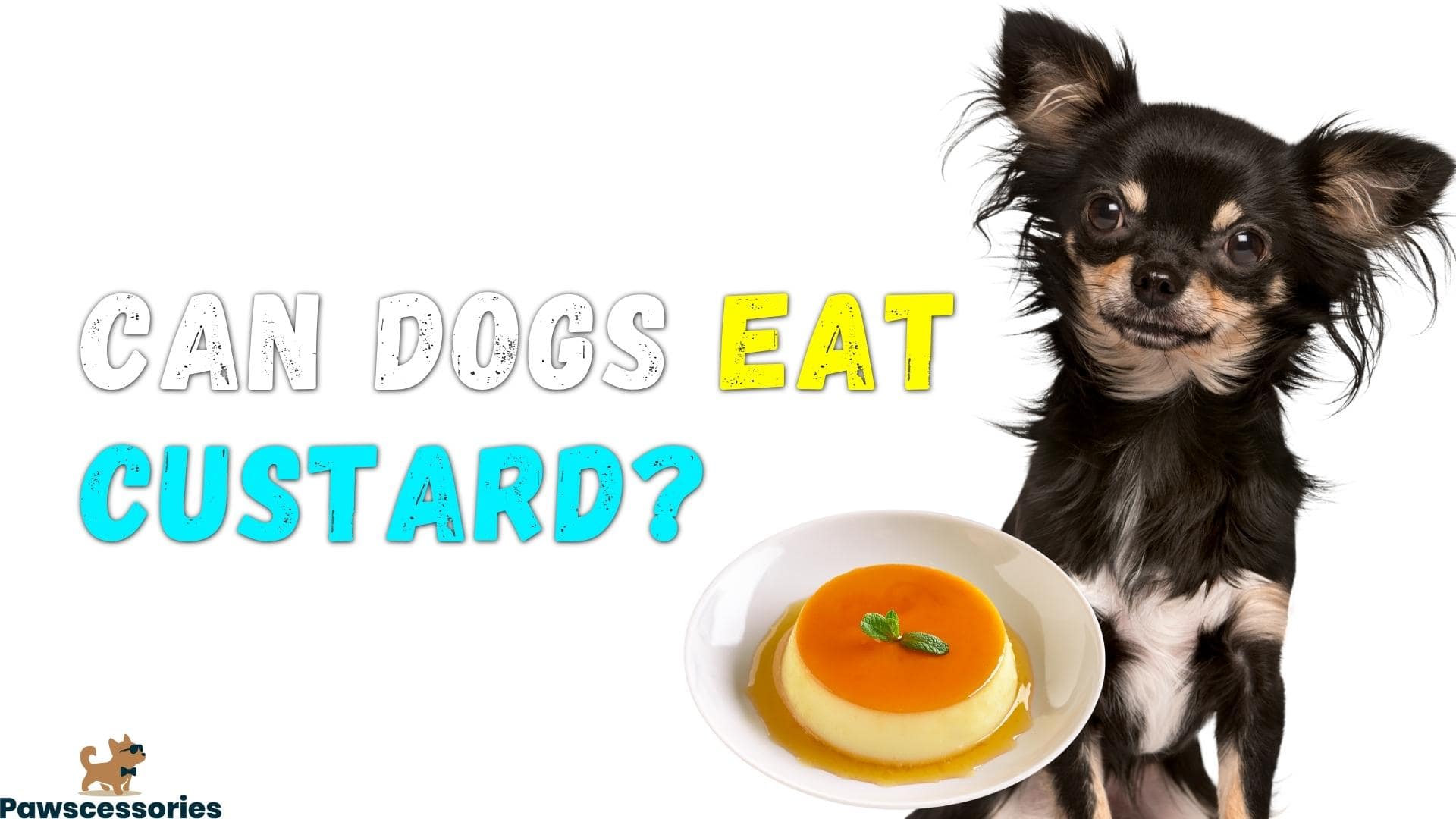
Understanding Custard
Custard is a sweet dessert made with milk, eggs, sugar, and flavoring. It can be enjoyed on its own or used as an ingredient in pies, tarts, trifles, and other desserts.
There are a few types of custard, including:
Baked custard
Baked custard is made by cooking in a ‘baine marie’ or water bath. It’s composed of whole eggs, milk, sugar, and flavorings.
Stirred custard
Stirred custard is made by cooking the eggs and milk over a stove until thickened, then adding sugar and flavoring.
Pastry cream custard
Pastry cream custard is made by cooking milk and flour together until thickened, then by adding eggs, sugar, and flavoring.
Powdered custard
Powdered custard is made by mixing maize and wheat starches with milk, sugar, salt, flavors, and colors, then cooked over heat until the mixture thickens.
Egg custard
Egg custard usually consists of eggs, milk, and sugar. Milk can be replaced with cream for a thicker custard.
Ultra heat-treated (UHT) custard
UHT custard comprises full-fat milk (~90%), sugar, thickener, flavorings, vegetable gum, and colors.
Can Dogs Eat Custard?
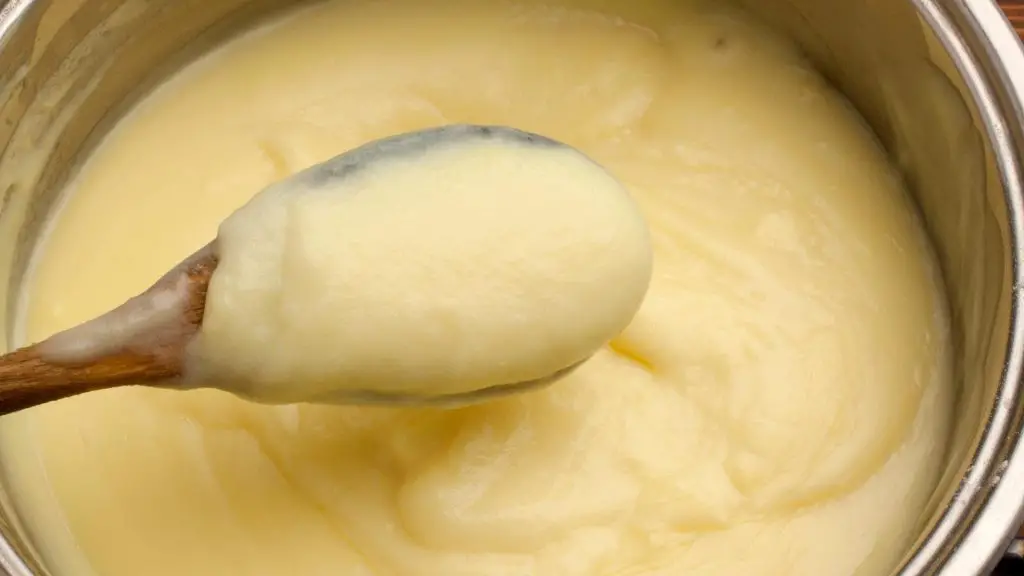
Dogs should not eat custard. It is high in calories, fat, and sugar, all of which can be harmful to your dog’s health. This goes for all types of custards.
Custard is also packed full of whole milk and sometimes cream. Dogs with lactose intolerance may have difficulty digesting custard and may experience an upset stomach and diarrhea.
In addition, certain custards will contain ingredients like chocolate or vanilla that are toxic to dogs.
While a small amount of custard is unlikely to cause your dog any issue, it’s not worth the risk to your dog’s health.
Is Custard Bad For Dogs?
Yes, custard is bad for dogs since it contains no real beneficial ingredients for them. In fact, custard is mostly made up of sugar, fat, milk, cream, and flavorings, all of which are bad for dogs in large amounts.
Custard is also high in lactose which can be difficult for dogs to digest.
Certain types of custard will also contain chocolate or vanilla flavoring, which are toxic for dogs and should be completely off-limits, even in small amounts.
Let’s look at the specific dangers to a dog’s health in more detail.
Dangers Of Dogs Eating Custard
Let’s be clear here, for a dog to truly face dangers from eating custard, they would have to eat a lot of it.
Ingesting large quantities of any food can cause digestive upset in dogs, but when it is a food-like custard that’s high in fats and sugar, there is added risk.
Here are a few of the risks when it comes to dogs eating custard:
High In Fat
It’s no secret that custards are high in calories and fat. This can lead to obesity and weight gain if your dog eats too much.
A 141-gram serving of custard is ~173 calories with 6 grams of fat. But, of course, that’s not including any additional flavorings added in.
Over time, a small treatment like this can lead to health problems such as diabetes, joint pains, and even heart disease.
High In Sugar
Custard is also high in sugar. Too much sugar can lead to weight gain and tooth decay in dogs.
It can also cause a spike in your dog’s blood sugar levels which can be dangerous for dogs with diabetes.
A dog that eats sugar can experience:
- Upset Stomach
- Diarrhea
- Weight Gain
- Obesity
- Diabetes
- Heart Disease
Lactose Intolerance
Custard always contains some combination of egg yolk, milk, and cream. All of which can be difficult for dogs to digest, particularly those lactose intolerant.
Lactose intolerance is when your dog cannot properly digest lactose, a sugar found in milk and other dairy products. This can lead to an upset stomach, diarrhea, vomiting, and gas.
Dogs with lactose intolerance lack the enzymes needed to properly digest milk sugar. Therefore, when they eat foods containing lactose, it can cause issues.
Even dogs with sensitive stomachs might have some digestive issues after eating custard.
Flavorings
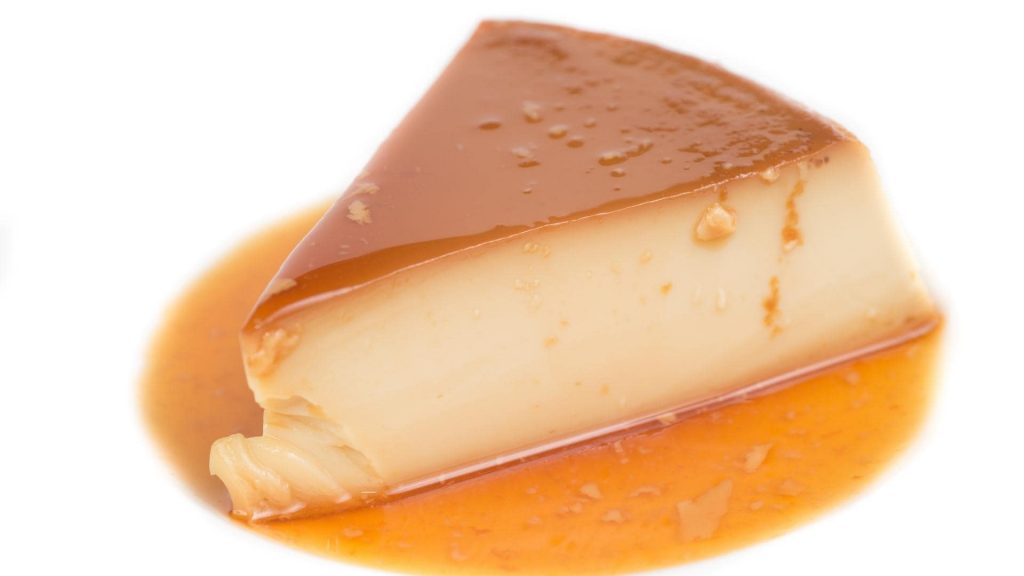
As mentioned already, some custards will contain chocolate or vanilla flavoring. These are both toxic to dogs and should be avoided at all costs.
Chocolate can cause vomiting, diarrhea, tremors, seizures, and even heart failure in dogs.
Vanilla extract contains a compound called ethyl vanillin. This compound can be toxic to dogs and cause vomiting, diarrhea, tremors, seizures, and even death.
Suppose your dog has eaten a large amount of custard with either flavoring. In that case, it is essential to seek veterinary attention as they could be at risk for serious health problems.
Can Dogs Die From Custard?
Custard can be dangerous for dogs if they eat too much of it. While a small amount is unlikely to cause any issues, the custard is high in calories, fat, and sugar, all of which can be harmful to your dog’s health.
If a dog eats a large helping of custard for its size, pancreatitis is the biggest concern though it’s very rare.
Pancreatitis is a very serious and potentially life-threatening condition that occurs when a dog’s pancreas becomes inflamed from eating too much fat.
Symptoms of pancreatitis in dogs include:
- Lethargy
- Vomiting
- Diarrhea
- Loss of appetite
- Abdominal pain
- Dehydration
- Fever
- Increased heart rate
- Difficulty breathing
In cases where pancreatitis is left unchecked, it can lead to organ failure and even death. Contact your veterinarian immediately if you think your dog may have eaten too much custard.
Ideally, custard should be avoided altogether as it offers little nutritional value and is potentially harmful to dogs. There are far better options out there that will satisfy your dog’s sweet tooth without causing harm to their body.
What To Do If Your Dog Accidentally Eats A Lot Of Custard?
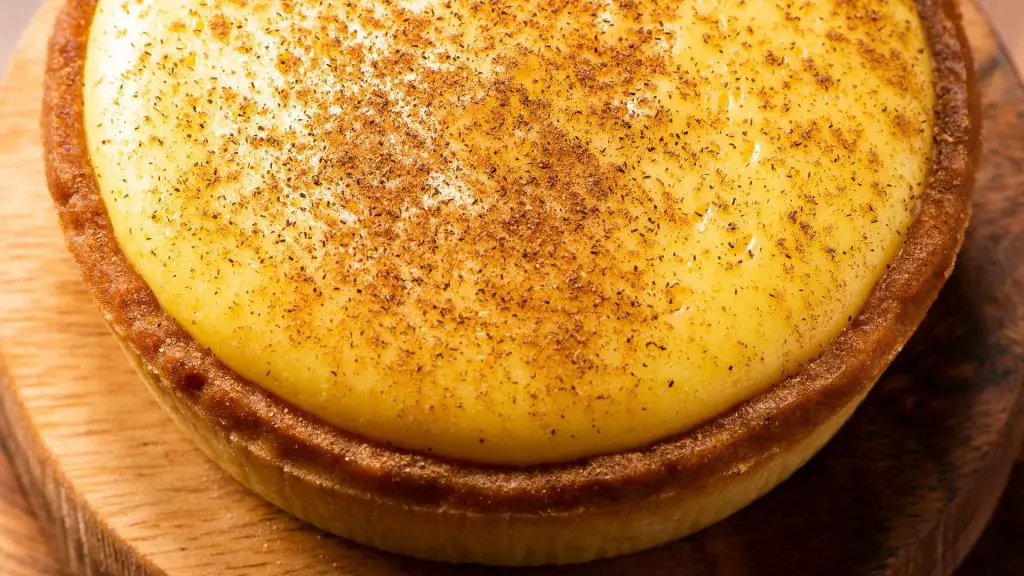
If your dog gets their paws into an entire bowl of custard, you might be wondering what to do.
Here are some of the key takeaways that I got after speaking with Dr. Littlejohn about what you should do in this situation.
Vets usually ask about the following things in these scenarios:
- Ingredients in the dish
- Amount your dog consumed
- How big your dog is
- How long ago it was consumed
- Changes to your dog’s behavior or energy levels
- Symptoms of pain or discomfort
- If your pup is still drinking and eating
- If they pooped or vomited
Knowing how a vet determines the severity of a situation can help you identify what you need to look for.
In most cases, home treatment is all that will be required. Dogs that have overindulged usually have an upset stomach, diarrhea, and smelly farts for a day or two. Some may even vomit.
However, it depends on how much they ate and how big your dog is. Smaller dogs are more likely to experience severe symptoms because they have a smaller stomach capacity. Their biggest risk is developing pancreatitis.
If your dog is acting lethargic, refuses to eat or drink, has bloody diarrhea, or is vomiting more than once, you will need to take them to the vet. These are all signs of severe pancreatitis and need to be treated by a professional.
On the other hand, large dogs are less likely to experience severe symptoms because they have a larger stomach capacity. Therefore, Lage dogs would need to consume a lot of custard before it became a problem.
The best thing you can do is keep an eye on your dog for the next 24 hours. If they experience any severe symptoms, then they should be taken to the vet immediately.
Other Frequently Asked Questions
Can Dogs Eat Vanilla Custard?
No, dogs should not eat vanilla custard. Vanilla custard is made using vanilla extract and flavorings that are toxic to dogs. In addition, imitation vanilla and vanilla extract have high alcohol contents that can harm a dog.
Can Dogs Eat Custard Pie?
No, dogs should not eat custard pie. Custard pie is made using eggs, milk, sugar, and other ingredients that are harmful to dogs. In addition, many custard pies are made with vanilla and nutmeg, both of which are toxic to dogs.
Its similar to a regular pie, dogs should not eat pie in generally.
Can Dogs Eat Frozen Custard?
No, dogs should not eat frozen custard. Frozen or not, custard contains high amounts of sugar and fat, with some containing flavoring that is toxic to dogs.
Can Dogs Eat Custard Ice Cream?
No, dogs should not eat custard ice cream. Custard ice cream has even more sugar than regular custard. Not the mention, the amount of dairy can make it hard for dogs to digest. As a result, dogs may experience gastrointestinal distress, diarrhea, and vomiting.
Can Dogs Eat Custard Apple?
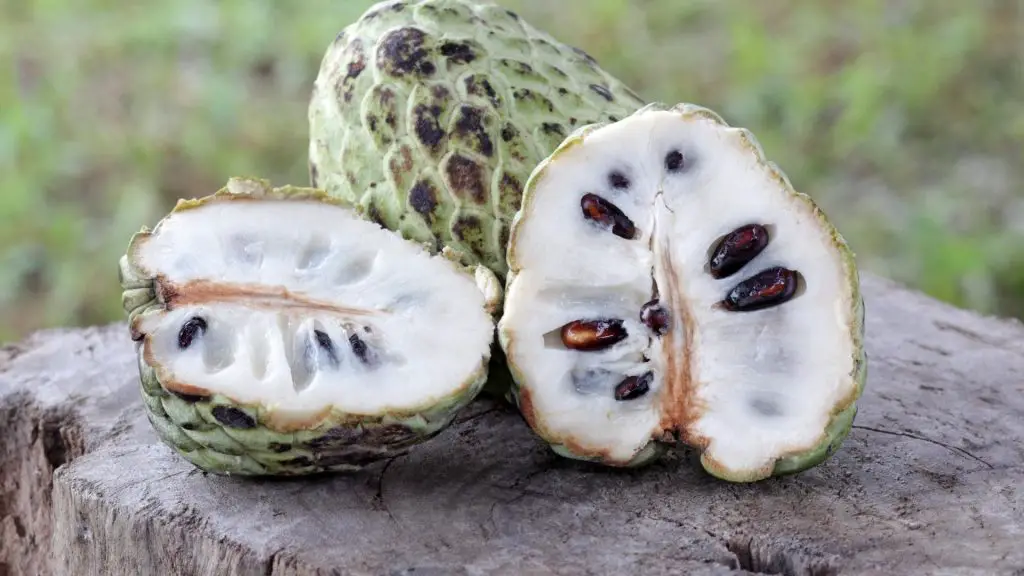
No, dogs should not eat custard apples. Custard apples, sugar apples, or sweetsop contain a toxic chemical called cyanide. This is a poisonous substance for dogs found in the seeds, skin, leaves, and roots of the custard apple.
Can Dogs Eat Culver’s Custard?
No, dogs should not eat Culver’s custard. Culver’s is a popular fast-food chain specializing in custard and ice cream. Unfortunately, their products contain high amounts of sugar, fat, and other ingredients that are harmful to dogs.
They have dog-friendly options on the menu, so stick to those because custard is not one of them.
Can Dogs Eat Rita’s Custard?
No, dogs should not eat Rita’s custard. Rita’s Ice is a popular restaurant chain specializing in Italian Ice, frozen custard, and specialty creations.
Unfortunately, their products contain high amounts of sugar, fat, and other ingredients that are harmful to dogs.
Other posts you may find interesting:
Can Dogs Eat Prickly Pears? We Consulted Vets To Find Out
